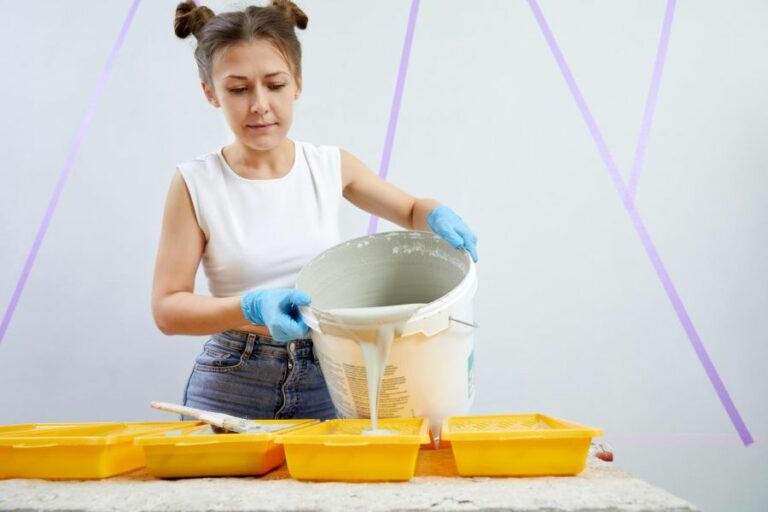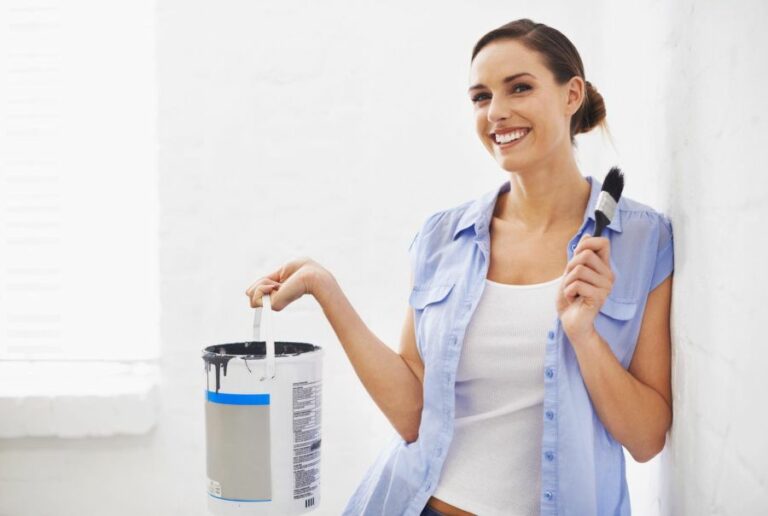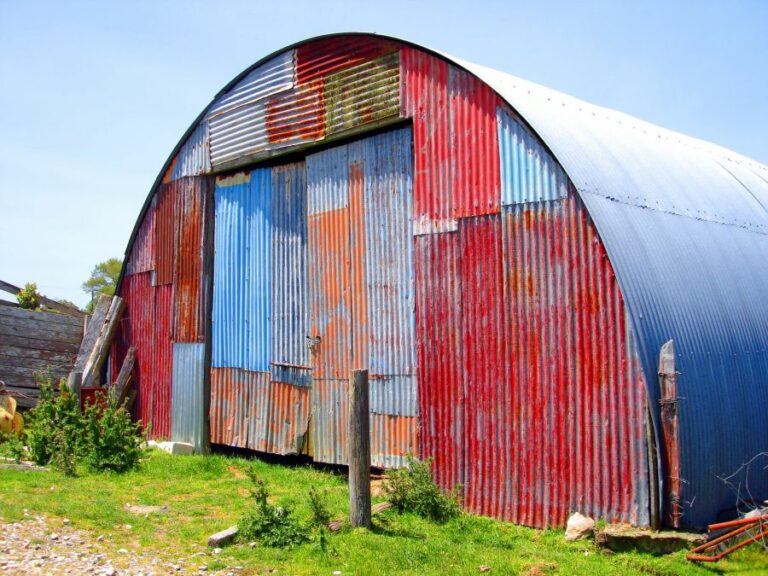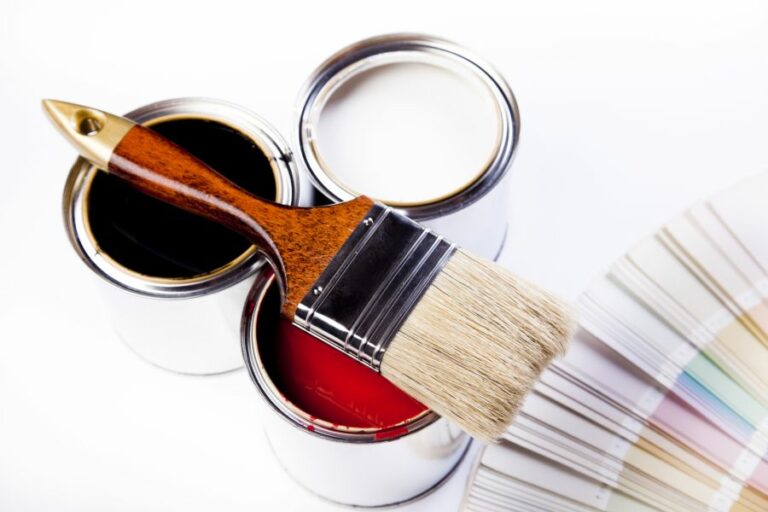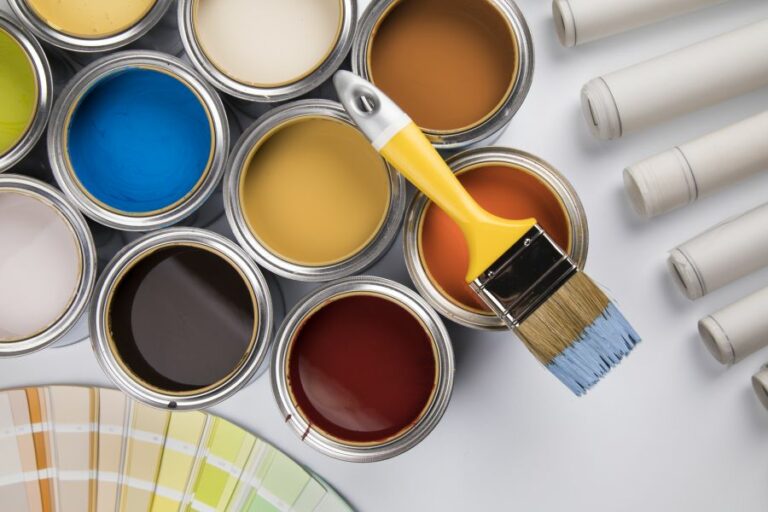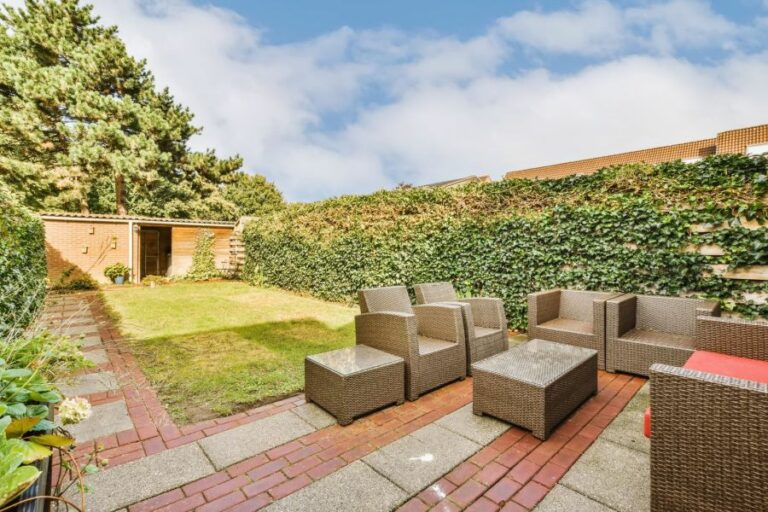The Ultimate Guide to Choosing the Best Basketball Court Paint
Welcome to the ultimate guide for ‘Outdoor Basketball Court Paint’! We will explore everything you need to know to transform your dull, outdated court into a vibrant, high-performance sports arena. From selecting the perfect paint to application techniques, I’ve got you covered. Whether you’re a DIY enthusiast or a professional contractor, don’t miss out on our expert tips and insights to ensure an impeccable finish that will not only prolong the life of your court but also elevate your game.
Outdoor basketball court paint:
Outdoor basketball courts require proper paint to maintain a high-quality playing experience. There are two main types of court paint: acrylic-based and polyurethane-based, each with its benefits and drawbacks. Acrylic-based paint is easier to apply and more cost-effective, while polyurethane-based paint offers enhanced durability and abrasion resistance. Proper surface preparation, application, and maintenance are crucial for a long-lasting and enjoyable outdoor basketball court.
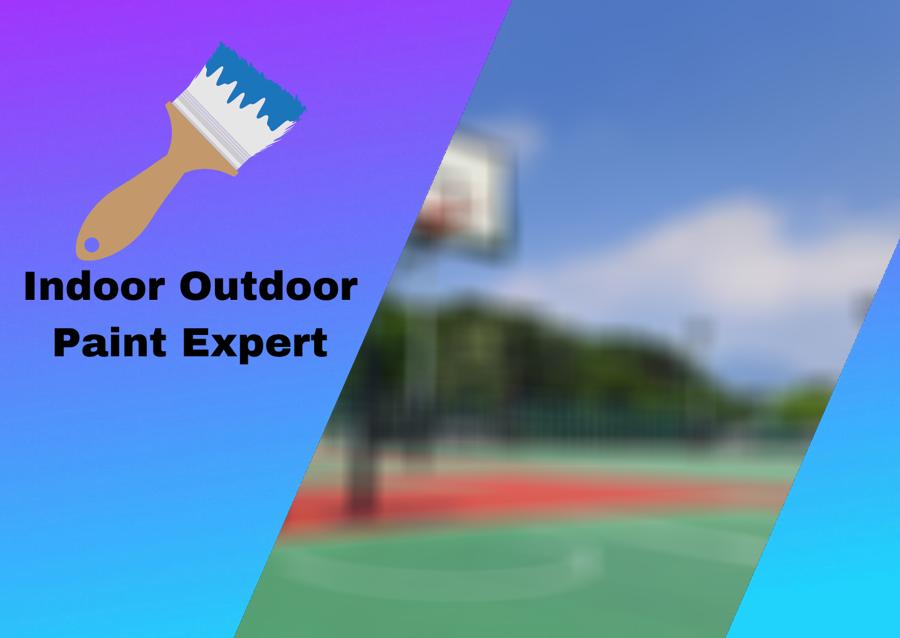
Discover the importance of outdoor basketball court paint in improving playability, safety, and aesthetics. Learn about paint types, application techniques, and maintenance tips to make your court stand out and last for years.
Contents
- 1 Exterior Basketball Court Surface Coating
- 2 Which Type of Paint is Most Suitable for an Outdoor Basketball Court?
- 3 Is It Advisable to Apply Paint on My Concrete Basketball Court?
- 4 Is it Possible to Apply Paint on a Concrete Basketball Court?
- 5 What Color is an Outdoor Basketball Court: Choosing the Best Color for Your Court
- 6 What is the process for painting a backyard basketball court professionally?
- 6.1 • Materials and Tools Needed
- 6.2 • Step 1: Choose the Right Paint
- 6.3 • Step 2: Prepare the Surface
- 6.4 • Step 3: Mark the Court Dimensions
- 6.5 • Step 4: Apply Painter’s Tape
- 6.6 • Step 5: Mix the Paint
- 6.7 • Step 6: Paint the Court
- 6.8 • Step 7: Remove the Painter’s Tape
- 6.9 • Step 8: Cure the Paint
- 6.10 • Final Thoughts
Exterior Basketball Court Surface Coating
Outdoor basketball courts see a lot of wear and tear from the constant pounding of basketballs, shoes, and the elements. To maintain a high-quality playing experience, use proper outdoor basketball court paint.
This guide will cover everything you need about outdoor basketball court paint, including types, materials, application, and maintenance.
• Types of Basketball Court Paint
There are two main types of outdoor basketball court paint: acrylic-based and polyurethane-based. Both types have their benefits and drawbacks, which are discussed below:
– Acrylic-Based Paint
Acrylic-based outdoor basketball court paint has been the standard for many years because it is durable and cost-effective. This type of paint is typically water-based and consists of acrylic resin mixed with various fillers and pigments.
It is easy to apply and offers excellent UV resistance, making it an ideal choice for outdoor courts.
Benefits of Acrylic-Based Paint
- Easy to apply
- Cost-effective
- Good durability
- UV resistant
Drawbacks of Acrylic-Based Paint
- Less resistant to abrasion compared to polyurethane-based paint
- May require more frequent reapplication
– Polyurethane-Based Paint
Polyurethane-based outdoor basketball court paint is a recent development and becoming increasingly popular due to its enhanced durability and better abrasion resistance. This type of paint is typically solvent-based and consists of polyurethane resin mixed with various fillers and pigments.
Though it is more expensive than acrylic-based paint, its longevity and resistance to wear may make it a better investment for some court owners.
Benefits of Polyurethane-Based Paint
- Excellent durability
- Superior abrasion resistance
- Longer-lasting compared to acrylic-based paint
- Better color and gloss retention
Drawbacks of Polyurethane-Based Paint
- More expensive than acrylic-based paint
- Can be more challenging to apply
• Preparing the Court Surface
Before applying outdoor basketball court paint, it is crucial to prepare the court surface properly. The following steps should be followed for the best results:
- Clean the Court: Sweep or pressure wash the court surface to remove dirt, debris, and loose paint. Allow it to dry thoroughly before proceeding.
- Repair Cracks and Holes: Fill any cracks or holes in the court surface with an appropriate patching compound. Follow the manufacturer’s instructions for proper application and curing times.
- Apply a Primer or Sealer (if necessary): Based on the paint type and court material, a primer or sealer may be required to ensure proper adhesion and durability of the paint. Follow the manufacturer’s guidelines for the correct product and application method.
• Applying Outdoor Basketball Court Paint
Once the court surface is prepared, it is time to apply the outdoor basketball court paint. Always follow the manufacturer’s recommendations for the specific paint product, but the following tips can help ensure a successful application:
– Equipment and Materials Needed
- High-quality outdoor basketball court paint
- Paint roller and tray or airless paint sprayer
- Painter’s tape
- Court line stencils or masking tape
- A measuring tape or string lines for marking the court
– Application Process
- Mark the Court Lines: First, mark out the court lines using measuring tape or string lines and apply the painter’s tape or court line stencils accordingly.
- Apply the Paint: Using a paint roller or airless paint sprayer, apply the outdoor basketball court paint evenly across the entire court surface. Apply the paint in thin coats to avoid pooling or visible streaks.
- Allow to Dry: Allow the paint to dry per the manufacturer’s recommended drying time, typically between 2472 hours. Consider factors such as temperature and humidity, which can affect drying times.
- Paint the Court Lines: Carefully paint the court lines using the stencils or painter’s tape once the paint has dried. Use a smaller paint roller or brush for precision in this step.
- Allow Lines to Dry and Remove Tape/Stencils: Allow the court lines to dry thoroughly before removing the tape or stencils. This will ensure crisp, clean lines without any smudging.
• Outdoor Basketball Court Paint Maintenance
To keep your outdoor basketball court looking its best and providing an enjoyable playing experience, it is essential to perform regular maintenance:
- Annual Inspection: Regularly inspect your court for signs of wear and tear, such as peeling or chipping paint, cracks, or holes.
- Cleaning: Regularly sweep or pressure wash your court surface to remove dirt and debris, which can cause damage to the paint and court surface over time.
- Repair and repainting: If needed, repair any surface damage and consider repainting the court to ensure a quality playing surface. Depending on the type of paint and usage, repainting can be necessary every 5-10 years.
Which Type of Paint is Most Suitable for an Outdoor Basketball Court?
Outdoor basketball courts are popular spots for players of all ages to enjoy a competitive game, practice their shooting skills, or even have a casual pick-up match with friends. However, a well-maintained outdoor basketball court requires high-quality paint to withstand constant foot traffic, harsh weather conditions, and significant wear and tear.
So, what paint is best for an outdoor basketball court? I will discuss the different factors to consider when selecting the right paint for your court and some popular paint options in the market.
• Factors to Consider When Choosing Basketball Court Paint
Before you start looking at different paint brands, it is essential to consider the following factors:
– Surface Material
The type of surface material your outdoor basketball court has will play a significant role in determining the right paint suited for it. Typically, outdoor courts have concrete, asphalt, or acrylic surfaces. Each surface type requires specific paint properties for the best results.
– Weather Conditions
As an outdoor court is exposed to various weather elements, such as rain, sun, snow, and humidity, the paint should be resilient enough to withstand these factors. The better the paint can handle extreme weather conditions, the less frequently your court would require a paint job.
– Desired Performance
High-quality paint should also provide excellent traction and grip, even during wet conditions, to ensure the safety and performance of the players. The paint should feel smooth to the touch and should not be slippery or sticky.
– Eco-Friendliness
In today’s environmentally-conscious world, choosing a paint that is low in volatile organic compounds (VOCs) and complies with environmental regulations is important. This will not only contribute to a greener environment but also result in improved air quality for the players and spectators.
• Popular Paint Options for Outdoor Basketball Courts
Based on the factors mentioned above, the following are some excellent paint options to consider for your outdoor basketball court:
1. Acrylic Sports Court Surfaces
Thanks to their durability and versatility, acrylic court surfaces are among the most popular choices for outdoor basketball courts. These paints are typically water-based and come in various colors, allowing you to customize your court as desired.
Various manufacturers offer acrylic paint options, often fortified with UV protectants to ensure fade resistance and longevity.
Recommendation: I highly recommend brands like SportMaster’s Acrylotex or Laykold’s Advantage for acrylic court surfaces. Both these options are known for their excellent traction, long-lasting wear, and resistance to harsh weather conditions.
2. Elastic Paint Systems
Elastic paint systems are ideal for outdoor courts built on concrete or asphalt surfaces. These paints are designed to expand and contract based on the movements and temperature changes of the court’s surface material.
As a result, they offer exceptional resistance to cracks and provide a comfortable playing experience. Elastic paints also provide excellent color uniformity and are available in various colors.
Recommendation: For an elastic paint system, I suggest using DecoTurf’s DecoColor or SportMaster’s ColorFlex. These products offer outstanding durability, performance, and resilience to cracks.
3. Rubberized Paints
Rubberized paints contain small rubber granules within the paint, providing extra traction and impact absorption for the players. These paints are designed explicitly for outdoor courts exposed to severe weather conditions.
They provide a comfortable playing experience with just enough grip and glide.
Recommendation: For rubberized paint options, I recommend checking out SportMaster’s ProCushion System or DecoTurf’s Deco Cushion System. These systems are known for their exceptional shock-absorbing properties and long-lasting durability.
• Proper Application and Maintenance of Court Paint
Regardless of the paint chosen for your outdoor basketball court, proper application and maintenance are crucial to ensure longevity and performance. Here are some tips to follow:
- Before applying the paint, clean the court’s surface thoroughly to remove dust, debris, and any loose material. Doing so ensures that the paint adheres to the surface properly.
- Using the recommended amount and type of paint for your court’s specific surface is essential. Applying too much or too little paint could lead to an uneven finish or reduced durability.
- Regularly inspect the court surface for any signs of wear, such as cracks or fading. Address these issues promptly to maintain the court’s performance and appearance.
- Schedule your court for periodic cleaning to remove accumulated dirt, mold, and mildew. This helps retain the court’s appearance while prolonging the life of the paint.
- Keep the basketball court as dry as possible after a rainstorm, as an excessively wet surface can be hazardous to players.
By carefully considering the different factors and popular paint options mentioned in this article, you can make an informed decision when choosing the best paint for your outdoor basketball court. Remember, it is not only about aesthetics and durability. The safety and performance of the players are also paramount.
Paint Type | Description | Advantages | Disadvantages |
|---|---|---|---|
Acrylic | Water-based paint that adheres well to outdoor surfaces. | – Durable – Resistant to UV rays and harsh weather conditions – Affordable | – Requires regular maintenance – Can be prone to flaking and peeling over time |
Epoxy | Two-part paint that forms a strong bond with the surface. | – Extremely durable – Long-lasting – Resistant to chemicals, oil, and grease | – Can be more expensive – Takes longer to dry and cure |
Latex | Water-based paint that dries quickly and is easy to clean. | – Quick drying time – Easy to apply – Easy to clean | – Less durable than acrylic and epoxy – May require more frequent maintenance |
Rubberized | Paint that contains rubber particles for added traction and cushioning. | – Provides excellent traction – Adds cushioning for player comfort – Can improve overall court performance | – Can be more expensive – May require professional installation |
Is It Advisable to Apply Paint on My Concrete Basketball Court?
Deciding whether to paint your concrete basketball court can be challenging, especially when figuring out the pros and cons of this option. I will comprehensively understand the factors you should consider when contemplating painting your concrete basketball court.
I will discuss the benefits and drawbacks, the right materials, and maintenance considerations.
• Benefits of Painting Your Concrete Basketball Court
– Improved Traction and Safety
One of the primary benefits of painting your concrete basketball court is the increased traction it provides. A well-painted surface enhances the athletes’ grip, resulting in better performance, and decreases the chances of slips and falls.
This implies a safer environment for athletes, minimizing the risk of injuries.
– Enhanced Visibility and Ball Response
Adding paint to your basketball court can improve the visibility of game lines, which is crucial for players and referees. Accurate game lines clarify the decision-making process during games, ensuring a smoother playing experience.
Additionally, a painted surface provides a better ball bounce response than unpainted concrete. This is because paint and top coating materials offer a more consistent texture than bare concrete, thereby improving the overall playability of the court.
– Aesthetic Appeal
A well-designed and striking paint scheme can significantly enhance the visual appeal of your basketball court. It’s aesthetically pleasing and instills pride in the players and the community. A charming court has the potential to attract more users and chances for friendly competition and camaraderie.
• Drawbacks of Painting Your Concrete Basketball Court
– Cost
Painting your concrete basketball court will undoubtedly incur additional costs. These may include the expense of paint, labor charges for professional painters, and the need to purchase supplementary materials such as sealers and topcoats.
– Maintenance and Longevity
While paint certainly provides several benefits, it also requires regular maintenance to keep it looking fresh and vibrant. The painted surface will gradually wear down over time, necessitating retouching or complete repainting.
This maintenance might seem like a drawback, but remember that a well-maintained court will exhibit increased longevity compared to one that’s not maintained.
• Choosing the Right Paint and Materials
When selecting paint for your concrete basketball court, it’s essential to pick a high-quality, durable product that can withstand the elements and the rigors of regular use. Here are some recommendations for choosing well-suited paint:
– Acrylic-Based Paint
Consider using an acrylic-based paint specifically designed for sports surfaces. These paints generally offer excellent durability, UV resistance, and quick drying times. Acrylic-based paints are also flexible, accommodating concrete surfaces’ natural expansion and contraction.
– Non-Slip Surface Additives
To enhance the safety and playability of the court, you may want to consider adding non-slip surface additives to the paint. These additives can be mixed into the paint before application or sprinkled onto the wet paint immediately after application.
They provide an additional layer of texture that aids in improving grip and preventing slips.
– Sealers and Top Coats
Apply a clear sealer or topcoat after painting your court to protect it from the elements and prolong your paint job’s life. Sealers also provide an extra layer of adhesion and durability, ensuring your court stays vibrant and eye-catching for longer.
• Maintenance Considerations
It’s essential to regularly maintain your painted concrete basketball court to ensure its longevity and performance. Some tips for proper maintenance include:
– Regular Sweeping and Cleaning
Regularly sweep and clean the surface to remove dust, debris, and grime. Accumulated dirt can lead to spots of poor traction and cause paint to wear down over time.
– Annual Inspections
Perform annual inspections to identify any areas of paint wear, cracks, or damage that require attention. Address these issues promptly to prevent deterioration and ensure your court remains safe and functional.
– Proper Drainage
Ensure that your court has appropriate drainage to prevent standing water, which can cause damage to painted surfaces and increase the chances of cracks in the concrete.
In conclusion, determining whether to paint your concrete basketball court depends on your needs, preferences, and budget. Painting offers numerous benefits, including increased traction, safety, game line visibility, and aesthetic appeal.
However, it also comes with the added cost and commitment to regular maintenance. If you paint your court, select high-quality materials and follow proper maintenance guidelines to ensure a long-lasting, vibrant, and safe playing surface.
Is it Possible to Apply Paint on a Concrete Basketball Court?
A well-maintained and visually appealing basketball court can provide an excellent recreational space for athletes and enthusiasts to practice their skills and have fun. When it comes to concrete basketball courts, over time, they can show signs of wear and tear, which leaves you wondering if you paint a concrete basketball court.
The answer is yes! You can paint a concrete basketball court with the right materials and techniques and improve its appearance and longevity. I will discuss the steps and tips for painting a concrete basketball court.
• Selecting the Right Paint
To begin with, choose the right type of paint for your concrete basketball court. Two main types of paint are suitable for concrete basketball courts: acrylic and epoxy.
– Acrylic Paint
Acrylic paint is water-based, making it easy to apply and clean up, with lower levels of harmful fumes than epoxy paint. Acrylic paint is also more resistant to UV radiation and moisture, preventing color fading and ensuring a longer lifespan for the court.
Acrylic paints are available in various colors, making it easy to create vivid and attractive markings and designs on your basketball court.
– Epoxy Paint
Epoxy paint is known for its durability and resistance to wear and tear, making it ideal for high-traffic areas like basketball courts. Epoxy paints form a thick, solid coating when cured, providing a non-slip, resilient surface that can withstand heavy use. However, these paints can be harder to apply and require more time to cure than acrylic paint.
Moreover, epoxy paints produce stronger fumes and may require additional ventilation during application.
When selecting paint for your concrete basketball court, consider your court’s specific needs and requirements, budget, and desired aesthetic outcome.
• Preparing the Concrete Surface
Before painting a concrete basketball court, it is crucial to properly prepare the surface to ensure proper paint adhesion and a long-lasting finish. Follow these steps to prepare the surface:
1. Clean the Surface
Remove any dirt, debris, or loose materials from the court surface using a broom or power washer. Be sure to clean any oil or grease stains, which can prevent the paint from adhering to the concrete properly.
2. Repair Cracks and Damage
Inspect the surface for any cracks or damaged areas that need repair. Use a concrete patching compound to fill any cracks or holes and allow it to cure according to the manufacturer’s instructions.
3. Etch the Surface
Etching the concrete surface will improve the adhesion of the paint. Apply a concrete etching solution per the manufacturer’s instructions and use a scrub brush to work the solution into the surface. Rinse the surface thoroughly after etching and let it dry completely.
• Priming the Surface
Priming is essential when painting a concrete basketball court, as it helps create a uniform, smooth surface that allows the paint to adhere properly. Choose a high-quality primer specifically designed for concrete surfaces and follow the manufacturer’s instructions regarding application and drying times.
• Painting the Basketball Court
Following the preparation and priming, it’s time to paint the basketball court. Here are the steps to follow when painting:
1. Choose the Court Layout and Markings
First, determine the layout and dimensions of your basketball court to ensure accurate and well-designed markings. Use measuring tapes, chalk lines, or string lines to mark the various lines on the court, such as the boundary lines, free-throw lines, and three-point lines.
2. Paint Using a Roller or Sprayer
When applying paint to the concrete basketball court, a roller or a paint sprayer may be used. Rollers are more suitable for smaller courts or detailed work, such as lines and markings, while sprayers are ideal for covering larger areas more efficiently.
3. Apply Multiple Coats
For a durable and lasting finish, apply at least two coats of paint, allowing each coat to dry thoroughly before applying the next one, per the manufacturer’s recommendations.
4. Paint the Lines and Markings
Once the base coat is dry, paint the markings and lines using a smaller roller or paintbrush, ensuring they are accurate and consistent for a professional-looking result.
5. Apply a Sealer (Optional)
Consider applying a concrete sealer over the painted basketball court for added durability and protection. Sealers can protect the paint from UV radiation, moisture, and general wear and tear, extending the court’s life.
• Conclusion
Painting a concrete basketball court can greatly enhance its appearance and help it stand up to regular use. By choosing the right paint, properly preparing the surface, and following the correct painting techniques, you can create a durable and visually stunning basketball court that will serve as an excellent recreational space for years.
Question | Answer |
|---|---|
Can you paint a concrete basketball court? | Yes, it’s possible to paint a concrete basketball court using specially designed paint and following the proper preparation and application steps. |
What Color is an Outdoor Basketball Court: Choosing the Best Color for Your Court
Outdoor basketball courts can come in various colors, providing a selection to suit different needs and environments. Choosing the right color for your outdoor basketball court is crucial for various reasons, such as visibility, UV resistance, and heat absorption.
Before deciding on your outdoor basketball court’s color, I will walk you through the essential factors to consider and look at some popular options.
• Factors to Consider When Choosing an Outdoor Basketball Court Color
– Visibility
One of the most crucial aspects to consider is visibility. The basketball court’s color must provide a sharp contrast against the basketball itself and, most importantly, the lines on the court.
This is essential for players and spectators to quickly and easily see the court markings, ensuring a smooth and enjoyable gameplay experience.
– UV Resistance
As outdoor basketball courts are exposed to various weather conditions, selecting a color that can hold up against ultraviolet (UV) light is essential. Prolonged exposure to the sun will cause the color to fade, compromising the court’s appearance and visibility.
A UV-resistant color will ensure the court maintains its vibrant appearance for longer.
– Heat Absorption
Outdoor courts are subjected to high temperatures during summer. Darker colors are known to absorb more heat, which can lead to a hotter playing surface.
Choosing lighter shades, such as blue or green, can help lower the court’s surface temperature and make the playing experience more comfortable for athletes.
– Aesthetics & Community Preference
The basketball court’s color should appeal to the eye and match the surrounding environment. Also, consider the community’s preferences, as an outdoor court is a shared space and should reflect the tastes of the majority of its users.
• Popular Outdoor Basketball Court Colors
Various colors are available for outdoor basketball courts, each offering unique advantages. We have listed some of the more popular selections below:
– Blue
Due to its aesthetic appeal and visibility, blue is one of the most popular choices for outdoor basketball courts. The contrast between the blue and white or yellow court markings is easy on the eyes, providing an optimal playing experience.
Also, blue courts have a lower heat absorption rate, making them a comfortable option in warmer environments.
– Green
Another popular choice for outdoor basketball courts is green, often seen in park and school settings. This color blends well with natural environments and offers excellent visibility when combined with white or yellow line markings.
Like blue, green offers lower heat absorption rates, making it a viable option for hotter climates.
– Gray
Gray is an excellent choice for those looking to maintain a neutral color that can blend into the surroundings. It provides a decent contrast against the court lines and ball and resists fading over time.
Gray courts also experience less glare under the sun, benefiting players and spectators alike.
– Red
Red outdoor basketball courts are an eye-catching option that offers high visibility. However, it is essential to remember that red courts may absorb more heat than lighter-colored courts. This color may suit cooler environments or courts shaded from direct sunlight.
– Multi-Color
Some outdoor basketball courts feature more than one color, with different shades used for the playing surface and surrounding areas. This approach adds visual appeal and can help further differentiate zones within the court, such as key areas and three-point lines.
• In Conclusion
There is no one-size-fits-all answer to the question, “What color is an outdoor basketball court?”. When selecting the color for your court, it is essential to consider factors such as visibility, UV resistance, heat absorption, and aesthetics.
Considering these points, you can find the perfect color that suits your outdoor basketball court’s needs and environment.
Remember, the ultimate goal is to create an enjoyable and safe playing experience for athletes and spectators alike. In doing so, you can foster a vibrant community space where people can gather to play, watch, and enjoy the game of basketball together.
What is the process for painting a backyard basketball court professionally?
If you have a backyard basketball court or are planning to install one, consider painting, it gives it a professional look and provides better traction and longevity. I will share a comprehensive step-by-step guide on painting a backyard basketball court, with tips and recommendations from my experience.
• Materials and Tools Needed
To paint a backyard basketball court, you will need the following materials and tools:
- Measuring tape
- Chalk or marking paint
- Straight edge or yardstick
- Paint roller and extension pole
- High-quality acrylic sports court paint
- Non-skid additive (optional)
- Paintbrushes
- Painter’s tape
• Step 1: Choose the Right Paint
When painting a backyard basketball court, choosing a high-quality acrylic sports court paint designed for outdoor use is crucial. This paint should be UV-resistant, water-resistant, and able to endure harsh weather conditions while maintaining its color and finish.
Additionally, find a paint formula that offers non-slip properties or consider adding a non-skid additive to enhance traction on the court.
• Step 2: Prepare the Surface
Before starting any painting project, it’s essential to have a clean and smooth surface to work on. Remove dirt, debris, and loose particles from the court surface by sweeping or using a leaf blower.
Repair any significant cracks or damages in the concrete or asphalt surface. Use a pressure washer to clean the surface thoroughly.
Allow the surface to dry completely before proceeding to the next step. Depending on the weather conditions, this might take several hours to a day.
• Step 3: Mark the Court Dimensions
Using a measuring tape and chalk or marking paint, outline the key dimensions of the basketball court. Make sure to mark the sidelines, the baseline, the free-throw line, the three-point line, and the half-court line. Use a straight edge or yardstick to ensure your lines are uniform.
If you need clarification on the standard dimensions for a backyard basketball court, consult an online reference or a sports equipment retailer.
• Step 4: Apply Painter’s Tape
After marking the court lines, use painter’s tape to mask the boundaries, ensuring that your paint only covers the desired areas. This will help you achieve crisp, clean lines and a professional-looking finish.
• Step 5: Mix the Paint
Following the manufacturer’s instructions, mix the acrylic sports court paint with necessary additives, such as a non-skid additive. Thoroughly mix the paint to ensure consistent color and quality.
• Step 6: Paint the Court
Start by painting the larger areas of the court using a paint roller and extension pole. Begin with the free-throw lane, followed by the three-point arc and the main playing area. Use long, even strokes to ensure a smooth, uniform finish.
You can paint the court lines with a paintbrush or specialized line-painting tool. Carefully follow the lines marked with chalk or marking paint, ensuring that the lines are straight and even. Be mindful of the paint drying times and avoid walking on freshly-painted areas.
For a more durable finish, consider applying a second coat of paint after the first coat has fully dried.
• Step 7: Remove the Painter’s Tape
After the paint has dried, carefully remove the painter’s tape from the court boundary lines. This will reveal your freshly painted backyard basketball court with crisp edges.
• Step 8: Cure the Paint
Allow the paint to cure for the recommended amount of time specified by the manufacturer, usually between 24 and 48 hours. During this time, avoid using the court to prevent any damage to the paint.
• Final Thoughts
Painting a backyard basketball court can be enjoyable and rewarding, resulting in a professional-looking and durable playing surface. Following these steps and using high-quality materials can transform your court into an aesthetically pleasing and functional space.
Always follow the paint manufacturer’s instructions, properly prepare the surface, and allow each layer of paint to dry thoroughly to ensure the best possible result. Happy painting, and enjoy your newly painted backyard basketball court!
Step | Instructions |
|---|---|
1 | Choose a flat area in the backyard for the court. |
2 | Measure and mark the dimensions of the court using stakes and string. |
3 | Level the ground and remove any debris or grass. |
4 | Install a suitable surface such as concrete or asphalt. |
5 | Allow the surface to cure for several days if necessary. |
6 | Select a high-quality, UV-resistant court paint in your preferred colors. |
7 | Clean the court surface thoroughly with a broom, leaf blower, or pressure washer. |
8 | Apply a primer to the court surface if required by the paint manufacturer. |
9 | Apply the first coat of court paint using a roller or airless paint sprayer, following the manufacturer’s instructions for coverage and drying time. |
10 | Apply a second coat of paint if necessary for even coverage. |
11 | Use a stencil kit or tape measure to mark the lines of the court, such as the free-throw lane, three-point line, and center circle. |
12 | Paint the lines with a contrasting color of court paint using a brush or paint sprayer. |
13 | Allow the paint to dry fully before using the court, typically 24-48 hours. |
14 | Install basketball goals, nets, and any additional accessories as desired. |

